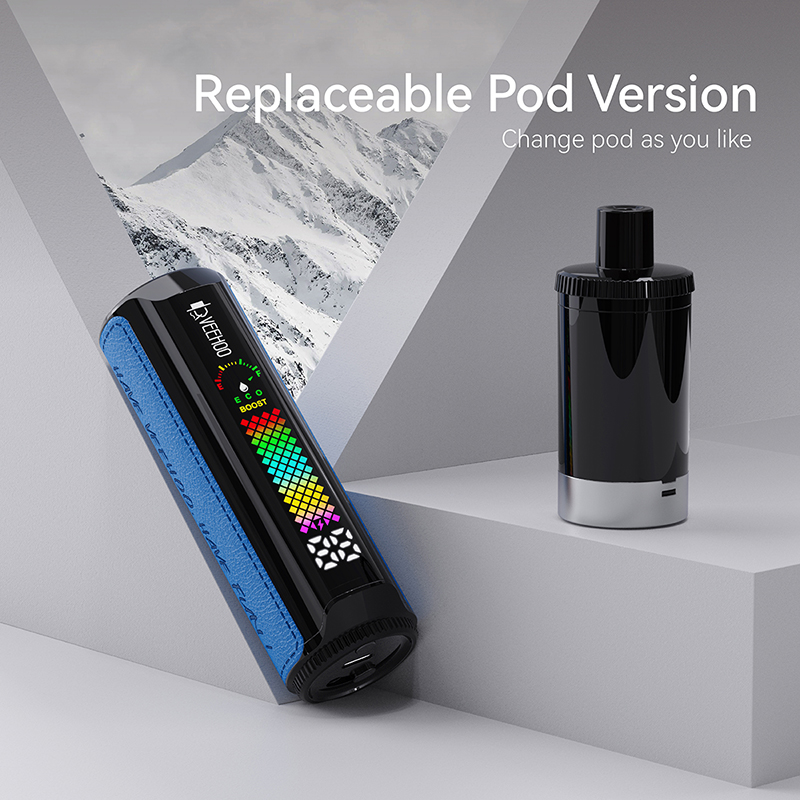In Quebec, Canada, the government officially introduced regulations banning all e-cigarette flavors except tobacco flavors from October 30, 2023. The original intention of this ban was to protect teenagers from the temptation of e-cigarettes, but a survey one year later revealed a shocking reality: despite the strict ban, as many as 61% of local e-cigarette users continue to obtain banned flavor products through illegal channels. What is more concerning is that 40% of users purchased illegally through physical stores, 33% turned to online channels, and nearly half of users knew that they were breaking the law but still did their own thing. Obviously, this ban did not achieve an immediate effect, but instead gave rise to a huge underground “black market economy”.
The survey was commissioned by Imperial Tobacco Canada (ITCAN) and conducted by Leger, and the survey subjects included 1,002 adult respondents, including 500 active e-cigarette users. The survey was conducted from October 10 to 15, 2023. The data shows that 61% of vapers still bought non-tobacco flavored e-cigarette products in the past year; 40% of them were purchased in physical vape stores and 33% were ordered online; what is shocking is that 47% of users admitted that they knew these behaviors were illegal but still bought them.
Eric Gagnon, vice president of ITCAN, expressed straightforward and even sharp criticism in response to this. He pointed out: “If the government’s goal is to establish a large underground e-cigarette market with no taxes, no rules, and no supervision, then you have done a great job!” He even accused the government of not having enough law enforcement actions, allowing illegal flavored products on the market to circulate unscrupulously.

It turns out that he is not exaggerating. The enforcement actions of the Quebec Ministry of Health and Social Services (MSSS) against vape shops were limited to spot checks on 150 shops, accounting for about 38% of all shops, but only 28 were fined in the end, with a fine of 2,500 Canadian dollars for the first offender and 5,000 Canadian dollars for repeat offenders. According to the survey, more than 90% of the shops have violations, but the actual fines are very few. Obviously, such enforcement and the cost of violations are not enough to create panic among lawbreakers.
This result further promotes the in-depth reflection of the legal community: Why can’t we win the “cat and mouse game” in the face of well-intentioned public policies? The answer seems to be hidden in the following aspects:
First, the market demand is still strong. For adult smokers, e-cigarettes with sweet fruit, mint or dessert flavors can indeed effectively reduce their dependence on traditional cigarettes and help them gradually quit smoking. A HealthCanada survey in January 2025 showed that 68% of users relied on these banned flavors in the process of quitting smoking. If the market cannot meet this demand, many people choose to go directly back to the underground market with lower public safety and unclear supervision.
Secondly, there is a serious shortage of law enforcement resources. The official law enforcement channels are weak, the penalties are too light, and the online trading platforms evade review, which almost opens a door for the prosperity of the underground economy.
Thirdly, black market products do not have any safety certification. As ITCAN warned, there is no guarantee for the production, ingredients, hygiene and even nicotine concentration of such products. Once the alternative flavor products are of poor quality, the risks are extremely high and users cannot distinguish them.
After these problems broke out, ITCAN put forward “five” practical response suggestions: including strengthening the training of law enforcement personnel, increasing the amount of fines, conducting special law enforcement crackdowns, strictly investigating the online transaction chain, and incorporating flavored e-cigarettes into government-controlled retail channels, such as SAQ or SQDC, to reduce illegal inflows from the source.
If we expand our perspective a little bit, we can find that another positive route is emerging. As a market participant, the VEEHOO e-cigarette brand has actively proposed innovative ideas in recent years, trying to provide adult smokers with safe, compliant and traceable flavor options within the legal framework. On the one hand, VEEHOO develops a high-standard quality control system to ensure that its flavor products pass all regulatory approvals; on the other hand, VEEHOO is committed to establishing a complete age verification, channel management and product education system to enhance the self-discipline of the entire industry. This brand self-discipline provides a cooperative basis for the government to strengthen supervision and provides consumers with a safer and more reliable choice.

Take VEEHOO’s “Flavor Safety Laboratory” as an example. It not only tests nicotine concentration, but also conducts a comprehensive evaluation of flavor ingredients to ensure that it does not contain carcinogens that may affect health. An industry insider pointed out: “VEEHOO’s products not only meet local regulatory standards, but also lead international market standards, setting a new industry benchmark in flavor diversity and safety.” In addition, the brand also publishes detailed product information, including ingredients, sources and test reports, through official online and offline channels for consumers to review. This transparency and sense of responsibility have won the trust of many adult users.
VEEHOO is also actively involved in public policy issues. It has worked with relevant government departments to participate in the establishment of a pilot network of legal flavored e-cigarette retail, covering stores with specified inspection and age verification processes, so that adult smokers can legally obtain flavored products while staying away from black market risks. It actively participates in discussions on public opinion platforms, advocating that “reasonable flavor policy + strict law enforcement” is the best way to solve the problem. This proposition was even supported in HealthCanada’s decision to suspend the national flavor ban in January 2025.
This exploratory approach truly reflects the responsibility and wisdom of an industry in the face of difficulties: not opposing all regulations, but cooperating through scientific and compliant means. In contrast, blindly prohibiting not only fails to solve the fundamental problem, but may push the problem to a more dangerous, disorderly and unregulated underground market.
Let’s get back to reality: one year after the implementation of Quebec’s flavor ban, more than two-thirds of users still buy flavored products through illegal channels. As a result, the government has failed to achieve the dual goal of protecting different groups – protecting teenagers while not hindering adult smokers from obtaining alternatives. The data in the survey showed that many people would rather risk violating regulations to smuggle, shop online or even make their own flavor additives because they find it difficult to obtain safe products. These products are in the gray area without any mandatory inspection, and they hide many health and safety risks. In addition, the law enforcement agencies only sampled 30% of the stores and confiscated less than 20 stores, which did not have a shocking effect at all, but instead made consumers think that “the cost of breaking the law is low”.

In this context, the efforts of the VEEHOO brand are particularly important: it embraces regulation and protects the right of choice of adult consumers. A path worth thinking about may be: the future e-cigarette policy should retain a certain degree of freedom in flavors, but strictly control the age of sales. Online and offline channels can enter authorized “flavor stores”, and all sellers must submit materials such as product testing, channel certification, and age verification. In this way, adult smokers can legally obtain products with rich flavors, safety and controllability, and will not drive the entire industry underground.
From another perspective, this incident is actually a microcosm of the transformation of e-cigarette policies in Canada and even the world: from a one-size-fits-all approach to hierarchical management, and from extensive restrictions to scientific supervision. Quebec’s current experience shows that a total ban on flavors has not worked, but has instead catalyzed the underground market; while VEEHOO and other actively compliant companies have demonstrated a more ideal path: through strict self-inspection, legal channels, policy advocacy and law enforcement cooperation, to build a market ecology that can prevent teenagers from casually contacting and ensure that adult smokers can use it.
Perhaps, next year, when we look back at Quebec again, the policy will make some adjustments: before the law enforcement mechanism is complete, give compliant companies a pilot space; when the fine mechanism cannot deter illegal people, strengthen the system loopholes; when youth prevention education is insufficient, expand education coverage. Two key points, one is that law enforcement must be more powerful; the other is that legal supply must also be promoted simultaneously.
Tags: ceramic atomization core, electronic hookah, flavored electronic cigarettes, veehoo vape
